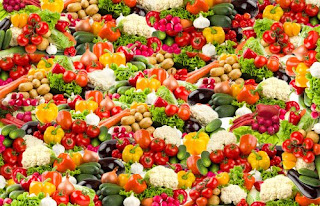
Type 2 Diabetes is the most common form of diabetes. There are 18.2 million people in the United States who have diabetes.
An estimated 13 million have been diagnosed, and unfortunately, 5.2 million people (or nearly one-third) are unaware that they have the disease. It occurs most often in people over the age of 30.
Warning signs of Type 2 diabetes may include frequent urination, unusual thirst, extreme hunger, unusual weight loss, fatigue and irritability as well as frequent infections, blurred vision, cuts or bruises that are slow to heal, and tingling or numbness in the hands or feet. Many people who have Type 2 diabetes have no symptoms.
Diabetes is a disease that impairs the body’s ability to use food. The hormone insulin, which is made in the pancreas, is necessary for the body to be able to use the sugar it makes from food (glucose). In people with diabetes, either the pancreas doesn’t make insulin or the body cannot use insulin properly. Without insulin, glucose - the body’s main energy source - builds up in the blood. When glucose builds up in the blood instead of going into cells, it can cause several problems:
• The body’s cells may be starved for energy.
• High blood glucose levels may damage the eyes, kidneys, or nerves over time.
• Increased risk for heart and blood vessel disease.
Diabetes is a chronic disease, which requires lifelong diet and lifestyle changes. The main goals are to achieve and maintain good blood sugar and lipid (fat) levels. Thus it is very important to frequently monitor blood sugar levels and keep them within the normal range.
DIETARY GUIDELINES THAT MAY HELP
Nutritional treatment for diabetes focuses on improving the body’s use of insulin through healthy meal planning, exercises and weight loss. A well-planned diet in combination with exercise and weight loss can dramatically improve the body’s response to insulin. This improvement helps prevent dramatic ups and downs in blood sugar levels. Sometimes diet and exercise may not be enough and the doctor may prescribe glucose-lowering drugs or insulin.
The nutrition plan for diabetes is the same healthy diet recommended for all people. A healthy diet should include carbohydrates and lean sources of protein, should be low in fat, and high in fiber. It is important to eat an appropriate amount of calories to achieve and maintain a healthy body weight.
There are three types of foods that fuel our body: carbohydrates, protein, and fat. Of these fuels, carbohydrates have the greatest effect on blood sugar levels.
• Carbohydrates: sources include breads, pasta, rice, cereals, grains, fruit, juices, sugar, milk, yogurt, and vegetables, including non-starchy vegetables (broccoli, leafy greens, carrots, and others) and starchy vegetables (potatoes, peas, corn, winter squash, yams, parsnips, and others).
• It is best to choose carbohydrates that are high in fiber such as, whole grain breads and cereals, and to avoid or eat small portions of food that contain refined carbohydrates (white breads, bagels, and pasta, candies, cookies, and cakes). Fiber in food slows the absorption of sugar, which keeps blood sugar from rising too quickly.
• Spread carbohydrates throughout the day by eating small meals and snacks to help to keep blood sugar levels even. Blood sugar levels may be managed more easily by eating 6 small meals or snacks throughout the day rather than 3 large meals.
• It is important that meals are not skipped; eating regularly and never skipping meals helps prevent dangerously low or high blood sugar levels.
BALANCE
Each meal should contain sources of healthy fats, protein, and fiber along with carbohydrates. Fats, protein, and fiber are digested slowly and help stabilize blood sugar. Work toward including small amounts of protein, fat, and fiber along with carbohydrates each time you eat.
• Protein: Protein increases the time that it takes for the body to digest foods and therefore helps limit sharp rises in blood sugar. Some protein should be included at each meal and snack. Choose lean protein sources such as fish, poultry, beans, nuts and seeds.
• Fat: Fat, like protein increases the time that it takes for the body to digest food. Also, a low fat diet is important for weight control and to reduce the risk of heart disease, therefore 20-30% of calories from fat is recommended. Limit saturated fats found in animal products (meat, poultry, dairy, and butter) and include sources of healthy fats (dry-roasted nuts and seeds, cold-water fish, avocado, and flaxseed oil).
• Fiber: Fiber, especially soluble fiber, helps slow the digestion and absorption of carbohydrates, which helps prevent rapid rises in blood glucose levels. Good fiber sources include beans, oat bran, nuts, seeds, pears, apples and most vegetables. Choose whole fruit rather than fruit juices; whole fruit has fiber, juice does not.
• Exercise: Exercise is a main component of blood sugar control: exercise can reduce blood sugar levels and increase the body’s receptiveness to it’s own insulin. A 30-minute walk after meals can help control blood sugar levels. Exercise in conjunction with diet changes assists with weight loss and decreases the risk for heart disease. If an exercise routine is not currently in place, check with a doctor before beginning.
References: American Diabetes Association http://www.diabetes.org
Mahan LK, Escott-Stump S. Krause’s Food, Nutrition and Diet Therapy (11th edition). WB Saunders Company, 2004.
 One piece of the diabetes puzzle that often goes unaddressed is stress. Stress is often the reason why people over eat with Type II diabetes in the first place.
One piece of the diabetes puzzle that often goes unaddressed is stress. Stress is often the reason why people over eat with Type II diabetes in the first place. 







